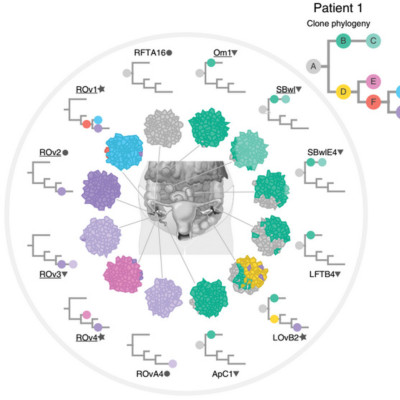Abstract
We performed phylogenetic analysis of high-grade serous ovarian cancers (68 samples from seven patients), identifying constituent clones and quantifying their relative abundances at multiple intraperitoneal sites. Through whole-genome and single-nucleus sequencing, we identified evolutionary features including mutation loss, convergence of the structural genome and temporal activation of mutational processes that patterned clonal progression. We then determined the precise clonal mixtures comprising each tumor sample. The majority of sites were clonally pure or composed of clones from a single phylogenetic clade. However, each patient contained at least one site composed of polyphyletic clones. Five patients exhibited monoclonal and unidirectional seeding from the ovary to intraperitoneal sites, and two patients demonstrated polyclonal spread and reseeding. Our findings indicate that at least two distinct modes of intraperitoneal spread operate in clonal dissemination and highlight the distribution of migratory potential over clonal populations comprising high-grade serous ovarian cancers.
